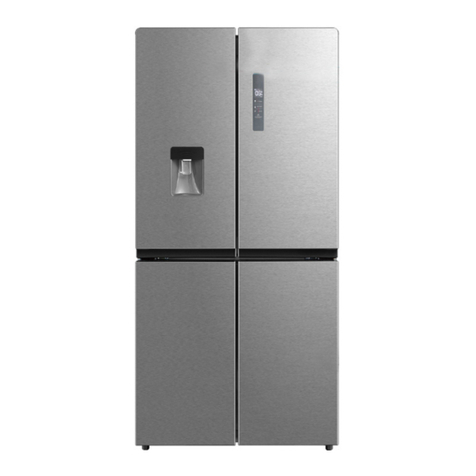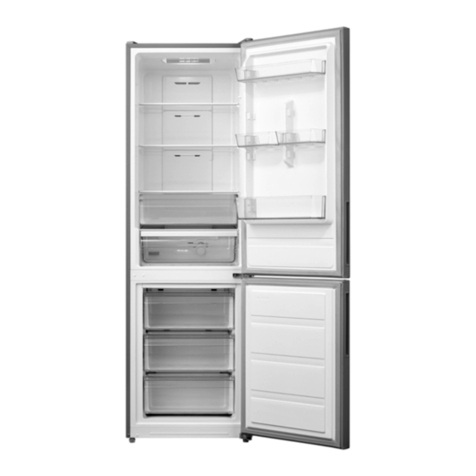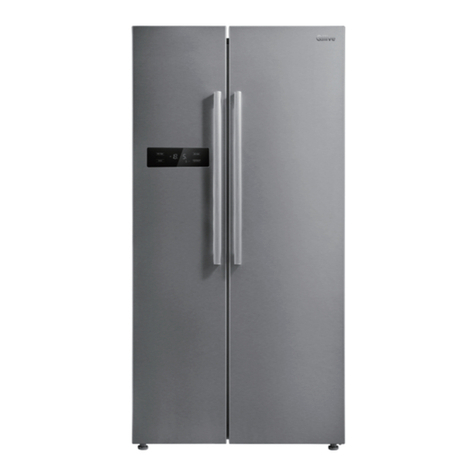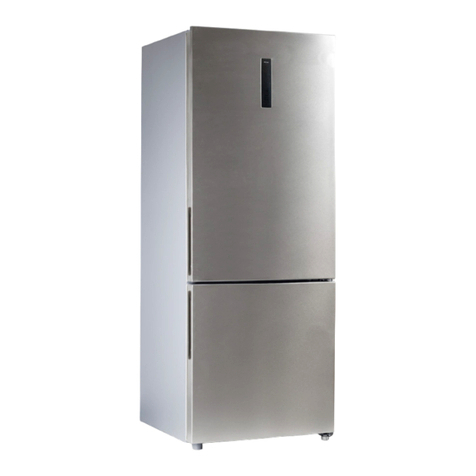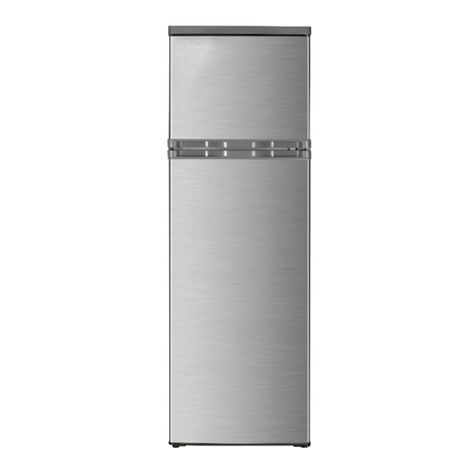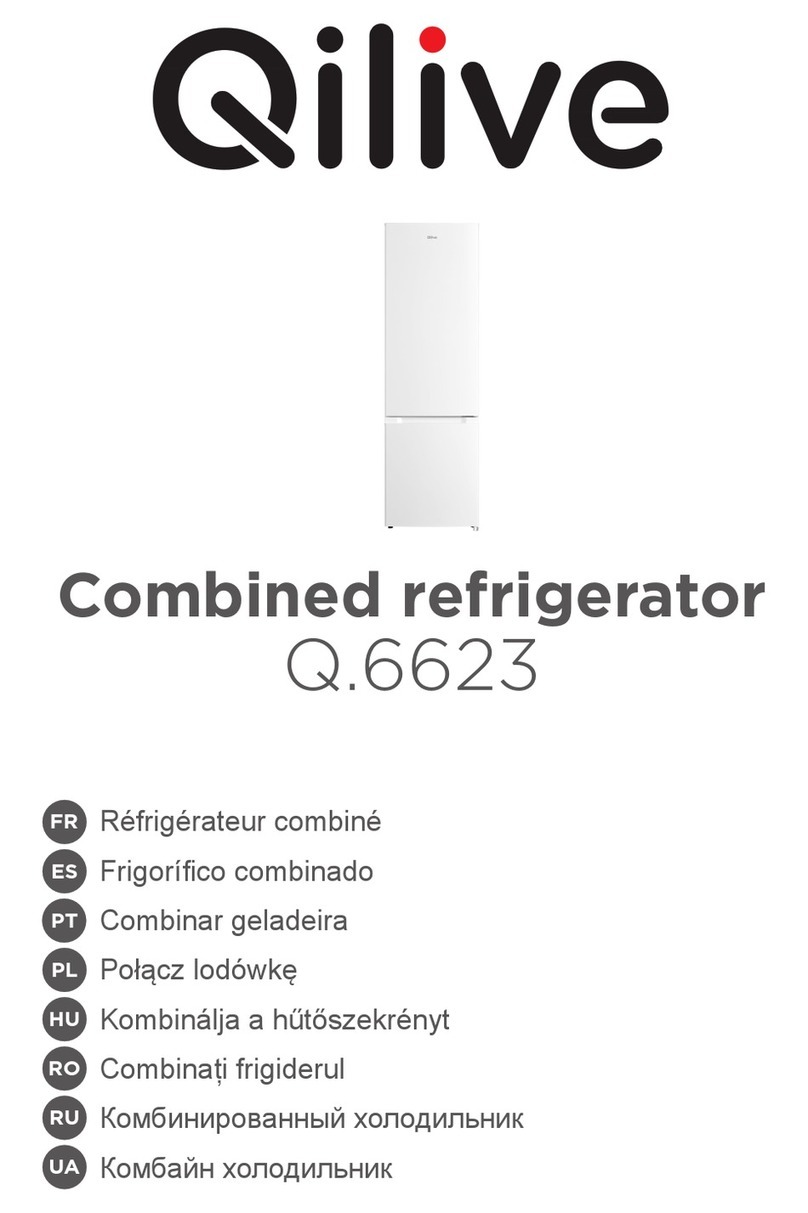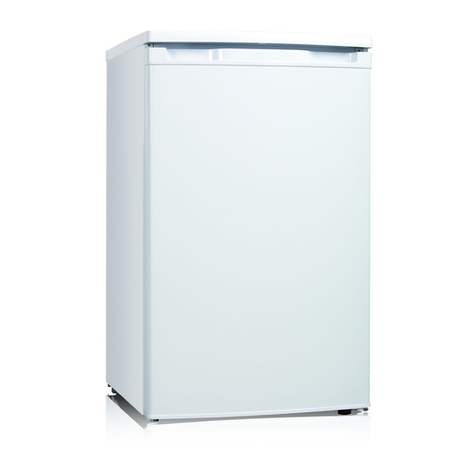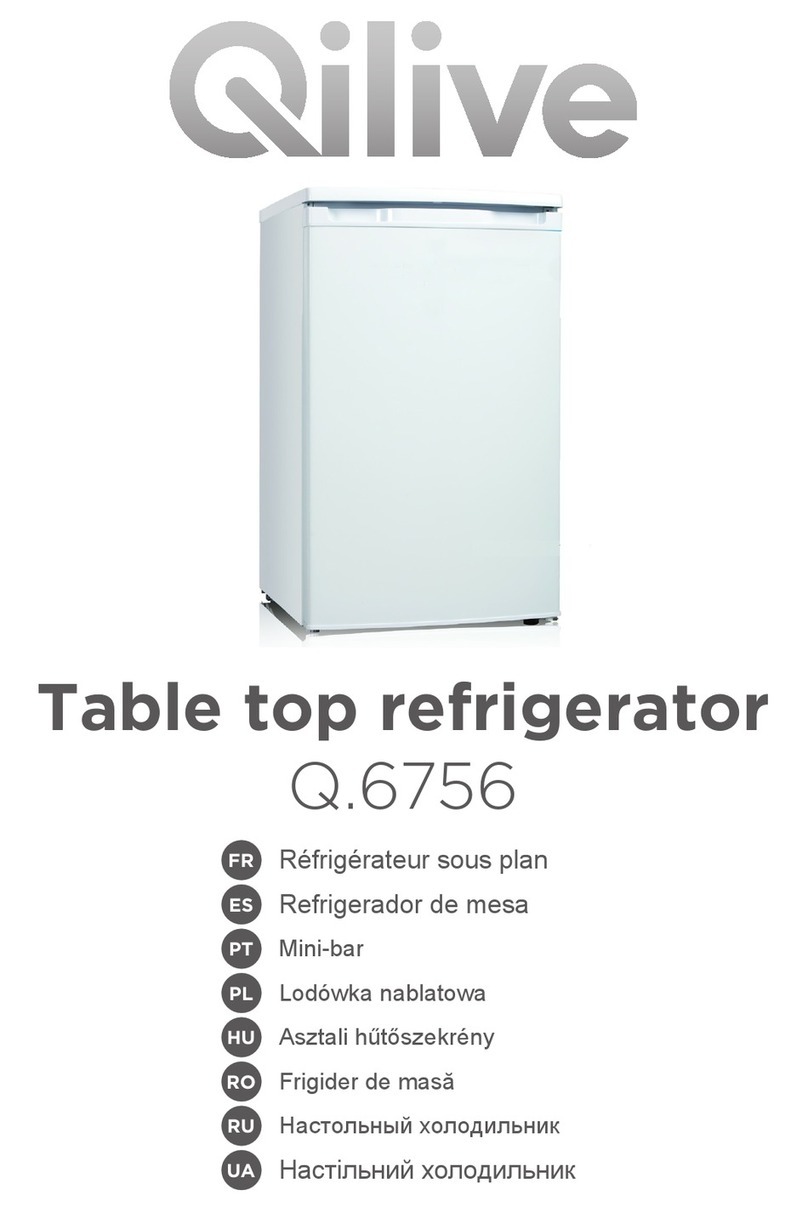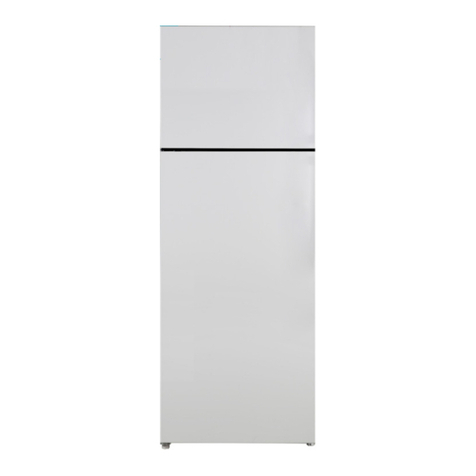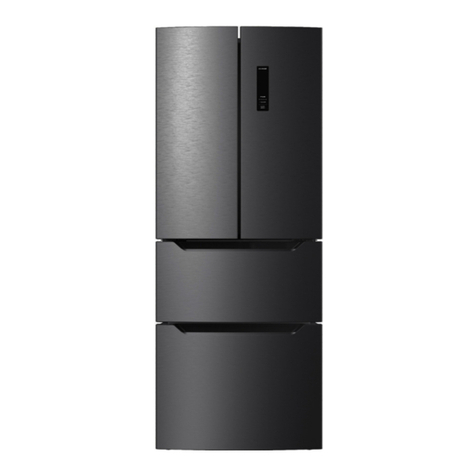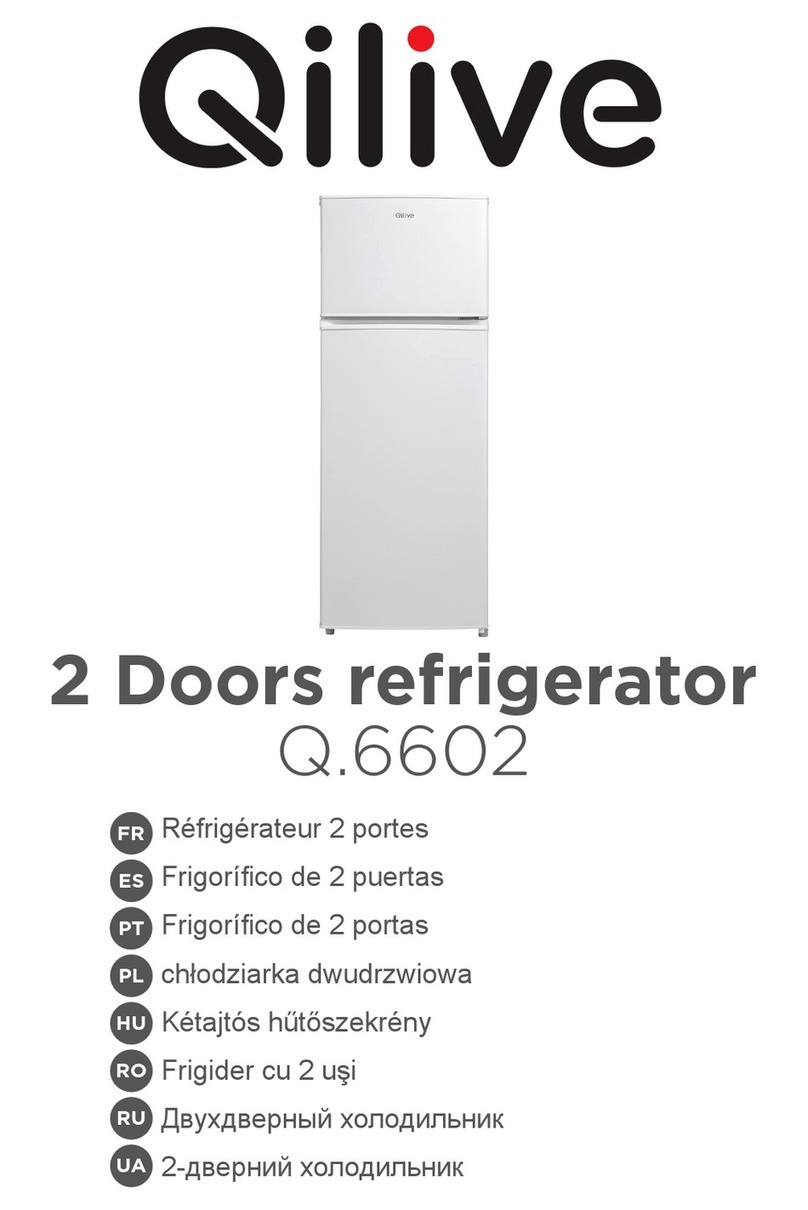
7
EN
- Opening the door for long periods can cause
a signicant increase of the temperature in the
compartments of the appliance.
- Clean regularly surfaces that can come in contact
with food and accessible drainage systems.
- Clean water tanks if they have not been used for
48 h; ush the water system connected to a water
supply if water has not been drawn for 5 days.
- Store raw meat and sh in suitable containers in
the refrigerator, so that it is not in contact with or
drip onto other food.
- Two-star frozen-food compartments are suitable
for storing pre-frozen food, storing or making ice
cream and making ice cubes.
- One-, two- and three-star compartments are not
suitable for the freezing of fresh food.
- If the refrigerating appliance is left empty for long
periods, switch o, defrost, clean, dry, and leave
the door open to prevent mould developing within
the appliance.
29. Children aged from 3 to 8 years are allowed to load
and unload refrigerating appliances.
30. WARNING: Do not locate multiple portable socket-
outlets or portable power supplies at the rear of the
appliance.
31. WARNING: To avoid a hazard due to instability of the
appliance, it must be xed in accordance with the
instructions.
32. WARNING: Fill with potable water supply only.
33. This refrigerating appliance is not intended to be
used as a built-in appliance.
34. Any replacement or maintenance of the LED lamps is
intended to be made by the manufacturer, its service
agent or a similarly qualied person.
35. Refrigerant and cyclopentane foaming material
used for the refrigerator are ammable. Therefore,
when the refrigerator is scrapped, it shall be kept
